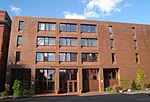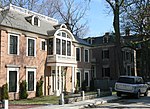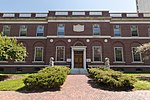Museum of Comparative Zoology

The Museum of Comparative Zoology (formally the Louis Agassiz Museum of Comparative Zoology and often abbreviated to MCZ) is a zoology museum located on the grounds of Harvard University in Cambridge, Massachusetts. It is one of three natural-history research museums at Harvard, whose public face is the Harvard Museum of Natural History. Harvard MCZ's collections consist of some 21 million specimens, of which several thousand are on rotating display at the public museum. The current director of the MCZ is James Hanken, the Louis Agassiz Professor of Zoology at Harvard. Many of the exhibits in the public museum have not only zoological interest, but also historical significance. Past exhibits have included a fossil sand dollar found by Charles Darwin in 1834, Captain Cook's mamo, and two pheasants that once belonged to George Washington, now on loan to Mount Vernon in Virginia. The Harvard Museum of Natural History is physically connected to the Peabody Museum of Archaeology and Ethnology; for visitors, one admission ticket grants access to both museums. The research collections of the MCZ are not open to the public.
Excerpt from the Wikipedia article Museum of Comparative Zoology (License: CC BY-SA 3.0, Authors, Images).Museum of Comparative Zoology
Divinity Avenue, Cambridge
Geographical coordinates (GPS) Address Nearby Places Show on map
Geographical coordinates (GPS)
| Latitude | Longitude |
|---|---|
| N 42.378472222222 ° | E -71.115555555556 ° |
Address
Harvard Museum of Natural History
Divinity Avenue
02143 Cambridge
Massachusetts, United States
Open on Google Maps








